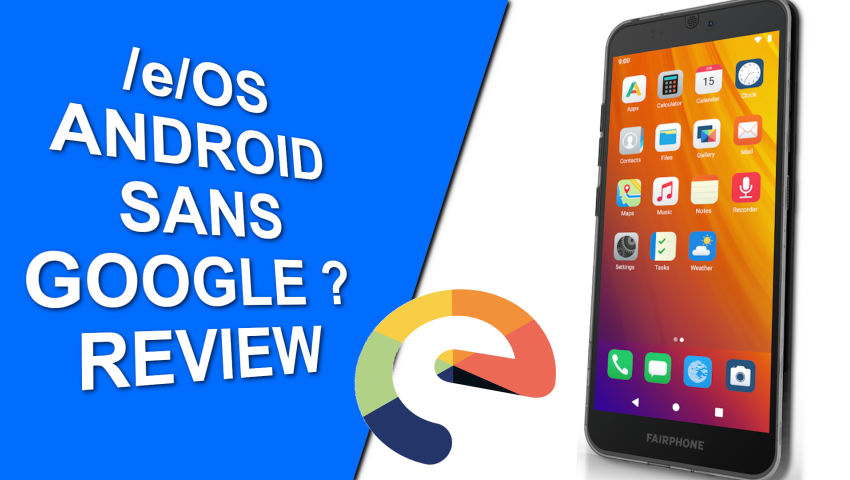-
 chevron_right
chevron_right
Mathias Poujol-Rost ✅ · Sunday, 13 March, 2022 - 12:21 edit
Contact publication

 chevron_right
chevron_right
Mathias Poujol-Rost ✅ · Sunday, 13 March, 2022 - 12:21 edit
Contact publication

Samsung Encryption Flaw
Bruce Schneier · news.movim.eu / Schneier · Wednesday, 2 March, 2022 - 20:45 · 1 minute
Researchers have found a major encryption flaw in 100 million Samsung Galaxy phones.
From the abstract:
In this work, we expose the cryptographic design and implementation of Android’s Hardware-Backed Keystore in Samsung’s Galaxy S8, S9, S10, S20, and S21 flagship devices. We reversed-engineered and provide a detailed description of the cryptographic design and code structure, and we unveil severe design flaws. We present an IV reuse attack on AES-GCM that allows an attacker to extract hardware-protected key material, and a downgrade attack that makes even the latest Samsung devices vulnerable to the IV reuse attack. We demonstrate working key extraction attacks on the latest devices. We also show the implications of our attacks on two higher-level cryptographic protocols between the TrustZone and a remote server: we demonstrate a working FIDO2 WebAuthn login bypass and a compromise of Google’s Secure Key Import.
Here are the details:
As we discussed in Section 3, the wrapping key used to encrypt the key blobs (HDK) is derived using a salt value computed by the Keymaster TA. In v15 and v20-s9 blobs, the salt is a deterministic function that depends only on the application ID and application data (and constant strings), which the Normal World client fully controls. This means that for a given application, all key blobs will be encrypted using the same key. As the blobs are encrypted in AES-GCM mode-of-operation, the security of the resulting encryption scheme depends on its IV values never being reused.
Gadzooks. That’s a really embarrassing mistake. GSM needs a new nonce for every encryption. Samsung took a secure cipher mode and implemented it insecurely.
News article .
 chevron_right
chevron_right
Mathias Poujol-Rost ✅ · Friday, 25 February, 2022 - 01:04
Contact publication

 chevron_right
chevron_right
Mathias Poujol-Rost ✅ · Thursday, 25 November, 2021 - 08:41
Contact publication

 chevron_right
chevron_right
Hundreds of scam apps hit over 10 million Android devices
WIRED · news.movim.eu / ArsTechnica · Saturday, 2 October, 2021 - 10:50 · 1 minute

Enlarge / Never put a GriftHorse on your phone. (credit: John Lamparsky | Getty Images)
Google has taken increasingly sophisticated steps to keep malicious apps out of Google Play. But a new round of takedowns involving about 200 apps and more than 10 million potential victims shows that this longtime problem remains far from solved—and in this case, potentially cost users hundreds of millions of dollars.
Researchers from the mobile security firm Zimperium say the massive scamming campaign has plagued Android since November 2020. As is often the case, the attackers were able to sneak benign-looking apps like "Handy Translator Pro," "Heart Rate and Pulse Tracker," and “Bus - Metrolis 2021” into Google Play as fronts for something more sinister. After downloading one of the malicious apps, a victim would receive a flood of notifications, five an hour, that prompted them to "confirm" their phone number to claim a prize. The “prize” claim page loaded through an in-app browser, a common technique for keeping malicious indicators out of the code of the app itself. Once a user entered their digits, the attackers signed them up for a monthly recurring charge of about $42 through the premium SMS services feature of wireless bills. It's a mechanism that normally lets you pay for digital services or, say, send money to a charity via text message. In this case, it went directly to crooks.

The techniques are common in malicious Play Store apps, and premium SMS fraud in particular is a notorious issue. But the researchers say it's significant that attackers were able to string these known approaches together in a way that was still extremely effective—and in staggering numbers—even as Google has continuously improved its Android security and Play Store defenses.
 chevron_right
chevron_right
We are looking for some help for the Movim Android application
Timothée Jaussoin · pubsub.movim.eu / Movim · Monday, 31 May, 2021 - 20:17 edit · 2 minutes
Hi,
I am writing this little post today to ask for (a bit) of help on the official Movim #Android application that is currently available there.
I am maintaining #Movim for more than 10 years now, mostly without asking for any help from the hundreds of daily users that we have now (on the servers we're aware of, at least). I am also maintaining and updating the infrastructure hosting the website, the official pod and the #XMPP server and related services.
However Movim is a little more than that, there is also an Android app, and a desktop app (currently abandoned).
I am maintaining the Android app with the really thin knowledge that I have on this platform. Most of the code of the application is basically copy/pasted from StackOverflow and a bit hacky. Fixing and developing this app is always really time consuming as the environment, and the way of dealing with it, is really different than the knowledge that I have on the web development side.
So basically today I'm asking from some help for the official Movim Android application. If you have a little bit of experience in Android development (or if you want to learn !) and if you're willing to help me to improve the application do not hesitate to contact me through our official chatroom, directly on Github or as a comment of this post.
The app is quite simple. It is basically a WebView that shows one of the configured pods. And… that's mostly it.
What would be really helpful would be to have (non exhaustive list):
There is no pressure or deadline, any pull requests that could help improving or fixing things in the application would be really appreciated.
I am currently dealing with Google to re-enable the application on the Play Store as well, I will keep you updated about that.
Regards,
edhelas
 chevron_right
chevron_right
Forget multiple cameras—Sharp phone has one giant 1-inch camera sensor
Ron Amadeo · news.movim.eu / ArsTechnica · Monday, 17 May, 2021 - 16:46 · 1 minute

On the back, you get a single giant camera, a time-of-flight sensor, and an LED flash. That's it. [credit: Sharp ]
Is filling the back of a smartphone with several small camera lenses really the best camera solution? Sharp is bucking the multi-camera trend with the Aquos R6 , a phone with—get this—a single massive camera on the back. Sharp is skipping all the wide-angle zoom lenses out there and going with a giant 1-inch camera sensor instead. This is either the single biggest smartphone camera sensor ever or it's tied for the largest ever, depending on how you categorize 2014's Panasonic Lumix CM1 , which isn't so much a "phone" as it is a point-and-shoot camera that runs Android and can make phone calls.
Sharp is not talking about its camera sensor supplier, but there's a good chance the part is from fellow Japanese company Sony, which has had a 1-inch "IMX800" sensor circulating around the rumor mill for some time. Sony is the leading smartphone camera sensor manufacturer, so don't be surprised to see a few more 1-inch sensor phones this year. The rest of the specs look pretty good, too. The phone comes with Android 11, a Snapdragon 888 SoC, 12GB of RAM, 128GB of storage, a 5000 mAh battery, a microSD slot, a headphone jack, and a USB-C port.
The display is a Sharp-made OLED with a whopping 240 Hz refresh rate. Sharp has made 240 Hz displays before, but it says this one is the "world's first" display to have a dynamic refresh rate that goes from 1 Hz to 240 Hz, depending on the content.
 chevron_right
chevron_right
Google I/O 2021 preview: Google resurrects Wear OS and Android tablets?
Ron Amadeo · news.movim.eu / ArsTechnica · Sunday, 16 May, 2021 - 13:30 · 1 minute

Enlarge / Sadly the Shoreline Amphitheatre will be empty this year. Google I/O is online-only. (credit: picture alliance / Getty Images)
Google I/O 2021 is actually happening this year. But due to a certain worldwide pandemic, it will be all online instead of outside in the sun of Mountain View. Google skipped the 2020 edition entirely, but the company is finally ready to deliver its first ever virtual Google I/O. For us onlookers, that means we're officially entering unknown territory.
Google I/O starts Tuesday, May 18 at 1 pm EDT, when Google/Alphabet CEO Sundar Pichai will take the stage and presumably show off what Google has been working on all year. We've been prepping for the show ourselves, and the shift to an all-virtual event hasn't lessened the amount of tea leaves to read. We're expecting to see quite a few things over the next week.
Well, first, let's talk about what we're probably not going to see: the Pixel 5a. At Google I/O 2019 , we saw the launch of the Pixel 3a in May of that year. But with I/O 2020 canceled, the Pixel 4a didn't hit the market until much later in the following year, on August 20, 2020. Normally we would call the launch timeframe for the 5a a toss up between mirroring the 3a or 4a launch dates, but Google has already set us straight. Back in April, the company said the Pixel 5a would be "announced in line with when last year’s a-series phone was introduced." So that's August, not May, and not at Google I/O.
 chevron_right
chevron_right
Google Pixel 6 leak shows off distinctive new design
Ron Amadeo · news.movim.eu / ArsTechnica · Friday, 14 May, 2021 - 16:37
Renders of the Pixel 6. Get a load of that camera bar. [credit: Jon Prosser ]
The Pixel 6 promises to be a landmark device for Google, as it is expected to mark the debut of the Google-developed "Whitechapel" SoC , instead of the Qualcomm chips the search giant has shipped in all of its previous devices. To go along with the revamped insides, it appears the outside is seeing some major design changes, too—if the newest leak is to be believed.
This first look at the Pixel 6 design comes to us from YouTuber Jon Prosser. Prosser claims he was sent live, hands-on images of the device, and while he isn't sharing the actual images, he teamed up with a render artist to depict the device based on those images.
Prosser's track record when it comes to Google leaks is not the greatest. Just last month he claimed the Pixel 5a was " canceled ," but that assertion was publicly shot down by Google. This leak has a bit more believability to it, as it was also backed up by Android Police's Max Weinbach, though he says the colors aren't accurate.